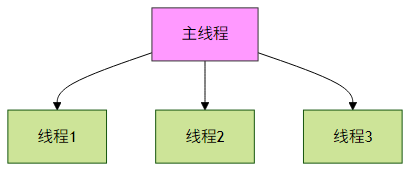Python高级特性解析:元编程与动态代码技术
Python高级特性与进阶技术深度解析
1. 元编程:动态代码的艺术
元类(Metaclass):类的工厂
元类是Python中最深奥的概念之一,它允许我们控制类的创建过程。元类实际上是"类的类"。
class Meta(type):
def __new__(cls, name, bases, namespace):
print(f"Creating class {name}")
return super().__new__(cls, name, bases, namespace)
class MyClass(metaclass=Meta):
pass
# 输出: Creating class MyClass实践建议:
- 元类主要用于框架开发(如Django ORM)
- 普通业务代码中尽量避免使用,优先考虑装饰器或普通继承
- 常见应用场景:自动注册子类、验证类属性、修改类定义
装饰器进阶
参数化装饰器允许装饰器接受自定义参数:
def repeat(num_times):
def decorator(func):
def wrapper(*args, **kwargs):
for _ in range(num_times):
result = func(*args, **kwargs)
return result
return wrapper
return decorator
@repeat(num_times=3)
def greet(name):
print(f"Hello {name}")
greet("Alice")
# 输出:
# Hello Alice
# Hello Alice
# Hello Alice类装饰器可以修改或增强整个类的行为:
def add_method(cls):
def new_method(self):
return "Added by decorator"
cls.new_method = new_method
return cls
@add_method
class MyClass:
pass
obj = MyClass()
print(obj.new_method()) # 输出: Added by decorator__new__ 与 __init__ 的区别

__new__:静态方法,负责创建实例(分配内存)__init__:实例方法,负责初始化实例(设置初始值)
class Singleton:
_instance = None
def __new__(cls):
if cls._instance is None:
cls._instance = super().__new__(cls)
return cls._instance
def __init__(self):
print("Initializing...")
a = Singleton() # 输出: Initializing...
b = Singleton() # 输出: Initializing...
print(a is b) # 输出: True动态属性控制
__getattr__ 和 __setattr__ 允许我们自定义属性访问行为:
class DynamicAttributes:
def __init__(self):
self._data = {}
def __getattr__(self, name):
if name in self._data:
return self._data[name]
raise AttributeError(f"No attribute {name}")
def __setattr__(self, name, value):
if name == '_data':
super().__setattr__(name, value)
else:
self._data[name] = value
obj = DynamicAttributes()
obj.x = 10
print(obj.x) # 输出: 10
print(obj.y) # 抛出 AttributeError2. 并发与并行:突破GIL限制
多线程与GIL

Python的GIL(全局解释器锁)导致同一时间只有一个线程执行Python字节码:
import threading
def count_up():
global counter
for _ in range(1000000):
counter += 1
counter = 0
threads = [threading.Thread(target=count_up) for _ in range(5)]
for t in threads:
t.start()
for t in threads:
t.join()
print(counter) # 通常小于5000000实践建议:
- I/O密集型任务:使用多线程(如网络请求、文件操作)
- CPU密集型任务:使用多进程或C扩展
- 线程间通信优先使用
queue.Queue
多进程:真正的并行
from multiprocessing import Process, Value
def count_up(counter):
for _ in range(1000000):
counter.value += 1
counter = Value('i', 0)
processes = [Process(target=count_up, args=(counter,)) for _ in range(5)]
for p in processes:
p.start()
for p in processes:
p.join()
print(counter.value) # 正确输出5000000异步编程(asyncio)
import asyncio
async def fetch_data(url):
print(f"开始获取 {url}")
await asyncio.sleep(2) # 模拟I/O操作
print(f"完成获取 {url}")
return f"{url} 的数据"
async def main():
tasks = [
fetch_data("https://api1.com"),
fetch_data("https://api2.com"),
fetch_data("https://api3.com")
]
results = await asyncio.gather(*tasks)
print(results)
asyncio.run(main())协程执行流程:
- 遇到
await暂停当前协程 - 事件循环执行其他就绪的协程
- I/O完成后恢复执行
3. 性能优化:从毫秒到微秒
代码剖析工具
import cProfile
def slow_function():
total = 0
for i in range(1000000):
total += i
return total
cProfile.run('slow_function()')输出示例:
4 function calls in 0.100 seconds
Ordered by: standard name
ncalls tottime percall cumtime percall filename:lineno(function)
1 0.100 0.100 0.100 0.100 <stdin>:1(slow_function)
1 0.000 0.000 0.100 0.100 <string>:1(<module>)内存管理技巧
import gc
# 禁用循环垃圾回收(谨慎使用)
gc.disable()
# 手动触发垃圾回收
gc.collect()
# 查看对象引用
import sys
print(sys.getrefcount(my_object))实践建议:
- 避免循环引用,必要时使用
weakref - 大数据处理时考虑生成器而非列表
- 使用
__slots__减少内存占用
C扩展加速
Cython示例(fastmath.pyx):
def fib(int n):
cdef int a = 0, b = 1, i
for i in range(n):
a, b = b, a + b
return a编译后调用:
import fastmath
print(fastmath.fib(100)) # 比纯Python快10-100倍4. 设计模式:Pythonic实现
单例模式(元类版)
class SingletonMeta(type):
_instances = {}
def __call__(cls, *args, **kwargs):
if cls not in cls._instances:
cls._instances[cls] = super().__call__(*args, **kwargs)
return cls._instances[cls]
class Database(metaclass=SingletonMeta):
def __init__(self):
print("初始化数据库连接")
db1 = Database()
db2 = Database()
print(db1 is db2) # 输出: True上下文管理器(__enter__/__exit__)
class Timer:
def __enter__(self):
self.start = time.time()
return self
def __exit__(self, exc_type, exc_val, exc_tb):
self.end = time.time()
print(f"耗时: {self.end - self.start:.2f}秒")
with Timer():
time.sleep(1)
# 输出: 耗时: 1.00秒观察者模式
class EventEmitter:
def __init__(self):
self._listeners = {}
def on(self, event, listener):
self._listeners.setdefault(event, []).append(listener)
def emit(self, event, *args):
for listener in self._listeners.get(event, []):
listener(*args)
emitter = EventEmitter()
emitter.on('login', lambda user: print(f"{user} 登录了"))
emitter.emit('login', 'Alice') # 输出: Alice 登录了最佳实践总结
- 元编程:框架开发利器,但避免过度使用
并发选择:
- I/O密集型 → asyncio
- CPU密集型 → multiprocessing
- 简单后台任务 → threading
性能优化路径:
- 算法优化 → 2. 标准库优化 → 3. Cython/Numba → 4. C扩展
- 设计模式:优先使用Python内置特性(如装饰器、上下文管理器)
记住:Python的哲学是"明确优于隐晦",高级特性应该用于解决真正复杂的问题,而不是炫技。